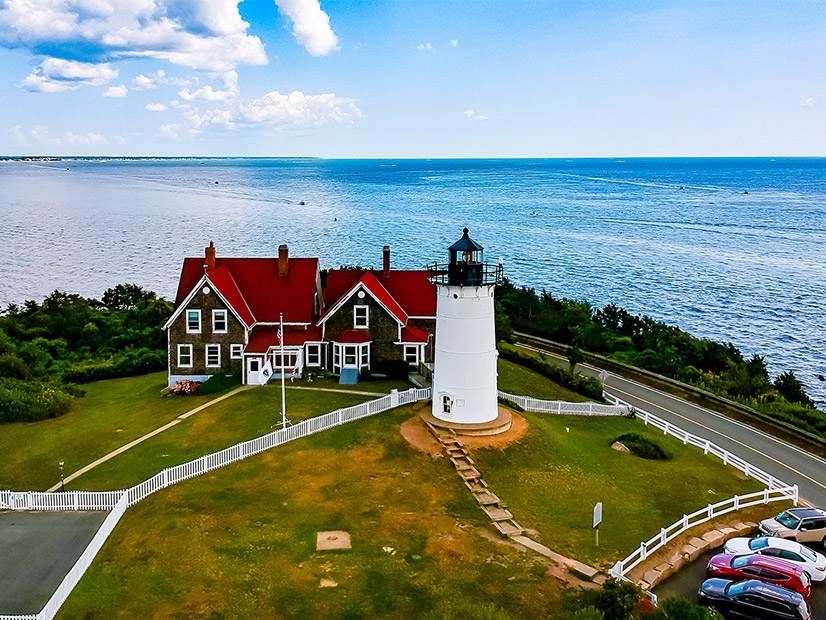The Bureau of Ocean Energy Management (BOEM) on Tuesday approved the final permit for Vineyard Wind I, signaling the start of commercial-scale offshore wind energy in the U.S.
The Vineyard Wind project will bring 84 turbines to the Atlantic Ocean off the coast of Martha’s Vineyard. They are expected to generate 800 MW of electricity, enough to power 400,000 homes.
“Today’s Record of Decision (ROD) is not about the start of a single project, but the launch of a new industry,” Vineyard Wind CEO Lars Pedersen said in a statement. “It’s been a long road to get to this point, but ultimately, we are reaching the end of this process with the strongest possible project.”
The decision comes after significant delays during the Trump administration, which tried to halt the permitting process. The Biden administration pledged to build 30 GW of offshore wind in the U.S. by 2030, and Vineyard Wind’s final approval is expected to kick-start the approval of more plans in the pipeline.
Federal approval also enables the beginning, this year, of construction of the offshore wind farm, which is expected to start delivering energy by 2023.
Vineyard Wind, a joint venture between Copenhagen Infrastructure Partners and Avangrid Renewables, predicts the project will create about 3,600 jobs and cut carbon emissions by more than 1.6 million metric tons per year.
The company is based in New Bedford, Mass., and will use the city’s port terminal for onshore operations.
“After years of planning and key investments in infrastructure and workforce development, New Bedford is poised to lead the industry’s rollout and facilitate its successful coexistence with the commercial fishing industry,” New Bedford Mayor Jon Mitchell said in a statement.
The Biden administration has indicated it will fast-track permits for offshore wind projects off the East Coast, use existing authorities in the Title XVII Loan Guarantee Program to support new projects and hold the additional lease sales needed for states to achieve their offshore wind capacity goals.
Massachusetts, Connecticut, New York and New Jersey have committed to 22 GW of offshore wind energy by 2035.
Potential Legal Challenges
Now that the BOEM has issued final approval for Vineyard Wind I, a significant regulatory precedent, it is likely groups, such as fishermen, that are opposed to offshore construction projects will file legal challenges to the project. (See Massachusetts Fishermen Brace for Offshore Wind.)
The Responsible Offshore Development Alliance (RODA) criticized BOEM’s environmental impact statement, released in March, for failing to address its concerns about lost fishing areas. The group also condemned Tuesday’s decision, which the group claimed in a statement includes “effectively no mitigation measures to offset impacts to critical ocean ecosystems and commercial fisheries.”
The ROD incorporates a voluntary and non-enforceable measure for Vineyard Wind to cooperate with the National Marine Fisheries Service (NMFS) to mitigate environmental impacts and measure the windfarm’s impact on the marine environment.
Vineyard Wind agreed to pay $23.4 million in funding for direct compensation to Massachusetts and Rhode Island fishermen for revenue or equipment loss caused by the turbines or cables.
The company will also allocate $12.5 million to establish a Rhode Island Fisheries Future Viability Trust, and work with the Massachusetts Executive Office of Energy and Environmental Affairs to establish a Fisheries Innovation Fund for $1.75 million.
“For the past decade, fishermen have participated in offshore wind meetings whenever they were asked and produced reasonable requests only to be met with silence,” Anne Hawkins, executive director of RODA, said in a statement. The ROD demonstrates that the federal government “cares more about multinational businesses and energy politics than our environment, domestic food sources or U.S. citizens,” Hawkins said.
In a letter signed by 1,700 people, fishing industry and community members requested 12 mitigation measures in the ROD to “ensure the continued success of the U.S. fishing industry.”
The requests included supporting the continuation of federal fisheries surveys, safe vessel transit, long-term biological and environmental monitoring plans, avoidance of sensitive habitat and improved communication with fishermen.
The ROD states that the requested two- to four-nautical miles-wide vessel transit lane through the development area would cause “economic and technical difficulties,” making it an unreasonable alternative to the one-by-one nautical mile-wide pathways between the turbines.
Vineyard Wind previously stated that wider transit lanes would increase cable lengths, which increase environmental impacts and potential transmission losses.
According to RODA, spacing the turbines one-by-one nautical mile apart is insufficient to ensure safety at sea for all types of fishermen and other seagoing vessels.
“The U.S. government is relinquishing protection for our precious ocean resources and jobs that provide healthy, low-carbon protein to Americans, and tether thousands of coastal communities to their heritage,” the alliance said. “If today’s actions set any precedent, our oceans are at risk of becoming fields of steel and fiberglass.”
Legal disputes over environmental impacts and other concerns significantly delayed the Cape Wind project in Nantucket Sound several years ago, resulting in National Grid and Northeast Utilities terminating its power purchase agreements with the project in January 2015.


